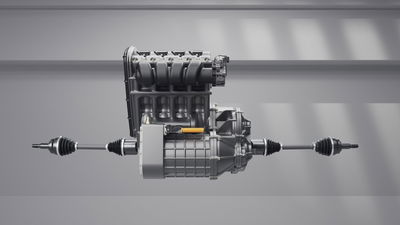Whoa: Jaguar Reportedly Studies Production C-X75 Concept
Lately, automakers have had tighter promotional budgets and an eagerness to show the public new product. That has resulted in less outlandish concepts and more thinly-disguised production preview "concepts."
Lately, automakers have had tighter promotional budgets and an eagerness to show the public new product. That has resulted in less outlandish concepts and more thinly-disguised production preview "concepts."
At the Paris Auto Show one such vehicle that we never expected to make the transition was the Jaguar C-X75 Concept. Well color us stunned, as the company is reportedly seriously considering the possibility.
Sometimes public reaction to a concept can be so strong that it changes the company's mind about production. Could that have happened with the C-X75? Jaguar originally made it clear that the car was a pure concept, and its advanced powertrain seemed to indicate that as well.
It is possible that the project could be wanted by Jaguar's new owner Tata Group, headed by CEO Ratan Tata. It has been said in the past that he has wanted new performance models at Jaguar.
Autocar is the source of this report about the C-X75. They say that Jaguar is considering a production run of the C-X75 with 2000 units produced per year, a number that seems unusually high to us for a model like this.
Another possibility is reportedly in the works, with under 1000 units per year as the baseline, and that each option demands different production methods. The main hang up has to do with the car's powertrain.
The concept utilizes turbine engines instead of gas units, in concert with electric motors. The car was designed around this setup. Jaguar's head of advanced powertrains says: “We’re talking two-to-three years for implementation of the gas turbine technology, then another three-to-four years to integrate into a vehicle.”
Interestingly, the cost of developing the Bladon Jets micro gas-turbines and integrating them into an automobile is actually significantly less than an internal combustion engine.
The problem is time - up to eight years getting them into a production application. Now that's a long time - far too long to capitalize on a desire for the C-X75 in the marketplace. We'll see have to see how this all plays out. We do hope something works out though, enabling this super cat to roam the roads someday.













Comments
No comments found.